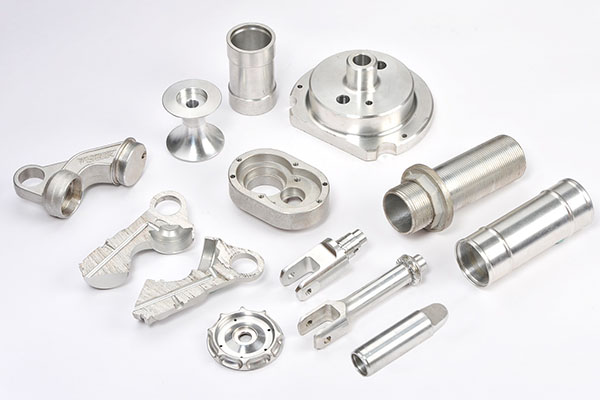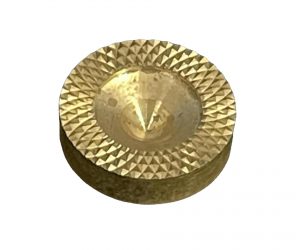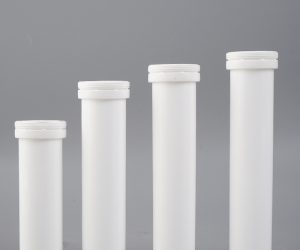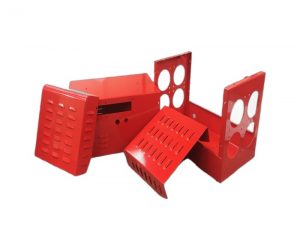1. Introduction: The Catalyst for Modern Manufacturing
In the fast - paced world of modern manufacturing, the ability to quickly transform ideas into tangible products is no longer a luxury but a necessity. This is where Rapid Prototyping Design (RPD) steps in, revolutionizing the product development lifecycle.
RPD is a technique that enables engineers to create physical prototypes of their designs with remarkable speed. By leveraging additive manufacturing (AM) technologies, it has become possible to turn digital concepts, which exist only as CAD (Computer - Aided Design) models, into three - dimensional physical objects in a matter of hours. This stands in stark contrast to traditional manufacturing methods, which could take weeks or even months to produce a prototype.
Take, for Yigu Technology example, the Stereolithography (SLA) technology. SLA uses a laser to cure layers of liquid photopolymer resin, building the prototype layer by layer. This process allows for the creation of highly detailed and accurate prototypes. Another popular technology is Fused Deposition Modeling (FDM). In FDM, a thermoplastic filament is melted and extruded through a nozzle, depositing material layer by layer to form the prototype. These AM technologies are the workhorses behind RPD, enabling the rapid creation of prototypes.
One of the most significant advantages of RPD is its ability to reduce material waste. Traditional manufacturing often involves subtractive processes, where material is removed from a larger block to create the desired shape. This can lead to a great deal of waste. In contrast, RPD, with its additive nature, only uses the amount of material necessary to build the prototype. Studies have shown that RPD can reduce material waste by up to 90%, making it not only more efficient but also more environmentally friendly.
2. Technical Foundations of Rapid Prototyping Design
2.1 Core Processes Reshaping Industries
RPD operates on the principle of additive manufacturing, building objects layer by layer, which is a radical departure from the subtractive methods of traditional manufacturing. This fundamental shift has enabled a new era of design and production, with several key technologies leading the charge.
- SLA (Stereolithography Appearance): This technology uses UV - cured resin as its raw material. A laser beam is directed at the liquid resin, curing it layer by layer to form the prototype. SLA is renowned for its high precision, capable of achieving surface finishes as fine as 1 - 5μm. This makes it ideal for applications where intricate details are crucial, such as in jewelry design, dental restorations, and small - scale mechanical components. For example, in the creation of custom - designed jewelry, SLA can accurately replicate the most delicate filigree patterns, providing a high - quality prototype that closely mimics the final product.
- SLS (Selective Laser Sintering): SLS works by using a laser to sinter polymer powders. As the laser scans across the powder bed, it fuses the particles together, layer by layer, to create the desired object. The advantage of SLS is its ability to produce functional parts with an accuracy of ±0.1mm. It can handle a wide range of materials, including nylon, polycarbonate, and even some metal - filled polymers. In the automotive industry, SLS is often used to create functional prototypes of engine components or interior parts. These prototypes can be tested for fit, form, and function, allowing for early design improvements without the need for expensive tooling.
- FDM (Fused Deposition Modeling): FDM is one of the most widely used RPD technologies, especially in low - cost and desktop 3D printing applications. It operates by extruding a thermoplastic filament through a heated nozzle. The molten plastic is deposited layer by layer onto a build platform, cooling and solidifying to form the prototype. FDM is popular for its simplicity, low cost, and ease of use. It is an excellent choice for rapid iterations during the design phase. A startup developing a new consumer product can quickly print multiple versions of a product enclosure using FDM to test different shapes, sizes, and ergonomic features.
The following Yigu Technology table summarizes the key features of these three core RPD technologies:
| Technology | Material | Precision | Ideal Applications |
| SLA | UV - cured resin | 1 - 5μm surface finish | Jewelry, dental, small - scale mechanical components |
| SLS | Polymer powders | ±0.1mm accuracy | Automotive functional parts, engineering prototypes |
| FDM | Thermoplastic filaments | Varies by printer, generally lower cost and speed - optimized | Rapid design iterations, low - cost prototypes, education |
2.2 Material Advancements
The progress of RPD is not only dependent on the evolution of manufacturing processes but also on the development of advanced materials. Modern RPD materials have expanded the possibilities of what can be created, enabling applications in various industries.
- Biocompatible Polymers: Materials like PEEK (Polyether - ether - ketone) have found significant use in the medical field. PEEK is biocompatible, meaning it can be safely implanted in the human body. It is used for manufacturing medical implants, such as spinal cages and joint replacements, as well as dental crowns. Its high strength, chemical resistance, and ability to withstand sterilization processes make it an ideal choice for these applications. In a study comparing the performance of PEEK - based implants with traditional metal implants, PEEK implants showed better integration with surrounding tissues and reduced the risk of long - term complications due to its more similar mechanical properties to human bone.
- High - Strength Alloys: Titane aluminide is an example of a high - strength alloy used in RPD for aerospace applications. Aerospace components need to be lightweight yet incredibly strong to withstand the extreme conditions of flight. Titane aluminide offers a high strength - to - weight ratio, making it suitable for parts such as turbine blades, engine casings, and structural components in aircraft. These components can be fabricated using RPD techniques to achieve complex geometries that are difficult to produce with traditional manufacturing methods. For Yigu Technology instance, the use of RPD - made titanium aluminide turbine blades in jet engines can improve fuel efficiency by reducing the weight of the engine while maintaining its performance.
- Composites: Carbon - fiber - reinforced plastics (CFRPs) are widely used in the automotive industry to create lightweight yet strong parts. CFRPs combine the high strength of carbon fibers with the moldability of plastics. In RPD, these composites can be used to produce parts such as body panels, chassis components, and interior trims. By using CFRPs, automotive manufacturers can reduce the overall weight of the vehicle, leading to improved fuel efficiency and better performance. A case study on a sports car manufacturer showed that by replacing traditional metal parts with CFRP parts made through RPD, the car's weight was reduced by 15%, resulting in a 10% increase in fuel efficiency and a 0.5 - second improvement in 0 - 60 mph acceleration time.
4. RPD vs. Traditional Manufacturing: A Comparative Analysis
When evaluating the capabilities of Rapid Prototyping Design (RPD) and traditional manufacturing methods, a detailed comparison reveals the significant advantages of RPD in various aspects. The following Yigu Technology table outlines the key differences between the two approaches:
| Parameter | Rapid Prototyping Design | Traditional Manufacturing |
| Material Waste | ||
| <10% | 30–70% | |
| Prototyping Lead Time | 1–3 days | 5–10 days |
| Design Complexity | Internal channels/lattices | Limited by tooling |
| Cost for Low Volumes | \(50–\)500 per part | \(200–\)2,000 per part |
4.1 Material Efficiency
Material waste is a critical factor in manufacturing, both from an economic and environmental perspective. Traditional manufacturing often relies on subtractive processes, such as machining, where excess material is removed from a larger block to create the desired shape. This can lead to a staggering amount of waste, with some estimates suggesting that traditional machining processes can waste up to 70% of the original material. For example, in the production of a metal component using traditional milling techniques, large amounts of metal chips are generated as the material is carved away.
In contrast, RPD's additive nature means that it only uses the amount of material necessary to build the prototype. A study by the University of Michigan found that RPD can reduce material waste by up to 90% compared to traditional manufacturing. In a case study of a consumer electronics company, RPD was used to produce the housings for a new product. By using FDM technology, the company was able to print the housings with minimal waste, as the printer deposited material only where it was needed. This not only reduced the cost of raw materials but also minimized the environmental impact associated with material disposal.
4.2 Time - to - Prototype
Time is of the essence in product development. The speed at which a prototype can be produced can significantly impact a company's ability to bring a product to market quickly. Traditional manufacturing methods typically involve multiple steps, including the creation of molds, tooling, and the actual production process. These steps can be time - consuming, with the prototyping lead time often ranging from 5 - 10 days. For instance, in injection molding, which is a common traditional manufacturing method for plastic parts, the design and fabrication of the mold alone can take several days.
RPD, on the other hand, can produce a prototype in a much shorter time frame, usually within 1 - 3 days. A startup developing a new medical device used SLA technology to create a prototype of a custom - designed implant. The digital design was sent to the SLA printer, and within 24 hours, a highly detailed and accurate prototype was produced. This allowed the startup to quickly test the form, fit, and function of the implant, accelerating the development process and potentially bringing the product to market months earlier than if traditional manufacturing methods had been used.
4.3 Design Freedom
The complexity of designs that can be achieved is another area where RPD outshines traditional manufacturing. Traditional manufacturing is often limited by the capabilities of the tools and processes used. For Yigu Technology example, in injection molding, the design of the mold restricts the complexity of the part that can be produced. Features such as internal channels, lattices, and complex geometries are difficult, if not impossible, to create using traditional methods without significant additional cost and effort.
RPD, with its layer - by - layer construction, enables the creation of highly complex designs with ease. Aeronautical engineers at Boeing used RPD to design and produce a fuel nozzle with internal channels that were optimized for fuel flow. The complex lattice structure of the nozzle, which was designed to reduce weight while maintaining strength, could not have been achieved using traditional manufacturing methods. The ability to create such complex designs in RPD allows for the development of more efficient and innovative products across various industries.
4.4 Cost Considerations
Cost is a crucial factor in the decision - making process between RPD and traditional manufacturing, especially for low - volume production. For small - scale production runs, traditional manufacturing can be prohibitively expensive. The upfront costs of tooling, molds, and setup can be substantial. For example, creating a custom injection mold for a plastic part can cost anywhere from \(5,000 to \)50,000, depending on the complexity of the part. This makes traditional manufacturing less viable for low - volume production, where the cost per part can be as high as \(200 - \)2,000.
RPD, on the other hand, has a much lower cost for low - volume production, with the cost per part typically ranging from \(50 - \)500. A small - scale jewelry manufacturer used RPD to produce limited - edition pieces. By using SLA technology, the manufacturer could create intricate jewelry designs without the need for expensive molds. The cost of producing each piece was relatively low, allowing the company to offer unique and high - quality products at a competitive price. This cost - effectiveness of RPD for low - volume production makes it an attractive option for startups, small - and medium - sized enterprises, and companies looking to produce limited - edition or custom - made products.
7. FAQ
1. How does RPD compare to traditional manufacturing in terms of cost for low - volume production?
RPD is significantly more cost - effective for low - volume production. Traditional manufacturing often has high upfront costs for tooling and setup, which can make the cost per part as high as \(200 - \)2,000. In contrast, RPD has a much lower cost per part, typically ranging from \(50 - \)500, due to its minimal tooling requirements and the ability to produce parts directly from digital models.
2. Can RPD produce parts with high precision and surface finish?
Yes, Yigu Technology RPD can produce parts with high precision and surface finish. Technologies like SLA can achieve surface finishes as fine as 1 - 5μm, making it suitable for applications where high - quality finishes are required. Additionally, SLS can produce functional parts with an accuracy of ±0.1mm, meeting the demands of industries such as aerospace and automotive for precise components.
3. What industries can benefit the most from RPD?
Industries that require complex designs, rapid innovation, and customization can benefit the most from RPD. The aerospace industry can use RPD to create lightweight and high - strength components with complex geometries, improving fuel efficiency and performance. The medical industry can produce custom - made implants and prosthetics, tailored to individual patients. The automotive industry can quickly prototype new vehicle parts, reducing development time and cost.



